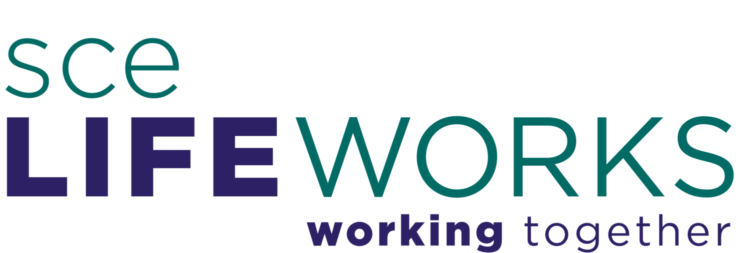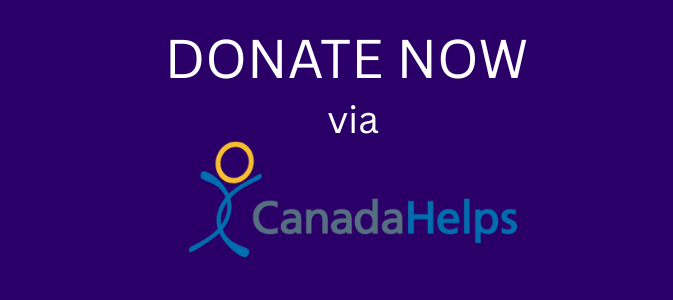
Partners:
· Dr. R. Freeze, Faculty of Education, University of Manitoba
· Dr. R. Kueneman, Department of Sociology, University of Manitoba
· Manitoba Family Services, Education & Training & Health
· SCE LifeWorks
· Network South Enterprises Inc.
· Association for Community Living, Manitoba
· Canada Employment and Immigration Commission
· Assiniboine South School Division
· St. Vital School Division
· Winnipeg School Division No.1
· St. James – Assiniboia School Division
· Portage la Prairie School Division
· parent representatives
Funder
· Social Sciences & Humanities Research Council (SSHRC)
Published Articles
Kueneman, R. and Freeze, D.R. (1997). Individual Transition Planning: Parents’ and Teachers’ Perceptions of the PATH Planning Process and Subsequent Plan Implementation. Developmental Disabilities
Bulletin
25(1) pp.1-26.
Manitoba Transition Project
Timeline:
1992 to 1995
SCE LifeWorks has partnered with research and education institutions and government and community organizations to discover and demonstrate important information and best practises in the field.
Purpose
The purpose of the project was to guide the introduction of transition planning and programming for students with mental and severe disabilities.
Intervention
Thirty-six students and their support networks took part in an individual transition planning process which utilized the Planning for Alternative Tomorrows with Hope (PATH) planning process (Pearpoint,
O’Brien, & Forest, 1993). Participants were given an advanced organizer handbook to aid in preparing for the meeting. Students, parents and teachers were interviewed regarding the planning process and the subsequent plan implementation.
Results:
Planning Process
· 75% of parents indicated that the PATH process was better than
the Individual Transition Planning (ITP) or Individual Education Plan
(IEP) meetings they had previously experienced. 11% said it was
the same and 14% had no opinion (all of those with no opinion had
no previous experience to compare to)
· 89% of teachers thought the PATH process was better, 3%
worse, and 8% had no prior experience with ITP or IEP meetings
· All parents felt their own ideas had been heard and included in
the transition plans.
· 86% of parents thought their children’s ideas had been heard and
included in the transition plans.
· Parents indicated the plan resulted in good discussion and planning
and that everyone had been involved and committed to the process.
· 92% of teachers felt they had been heard and that their ideas were
included in the transition plans.
· 81% of parents and 92% of teachers thought the PATH process gave
them a clear idea of what the school would be concentrating on in the
students’ programs.
Plan Implementation
· When asked about the implementation of the plan 42% of parents
were satisfied or very satisfied, 31% were moderately satisfied,
and 19% were either dissatisfied or very dissatisfied.
· 81% of teachers were satisfied or very satisfied with the
implementation of the transition plans while 17% were moderately
satisfied and none were dissatisfied or very dissatisfied.
Discussion:
· Parents and teachers thought the PATH process was a very
effective planning tool.
· The advanced organizer handbooks were helpful preparation
for the PATH meetings in that they helped the participants focus
their attention, set their priorities, and rehearse how they might
participate most effectively.
· Both parents and teachers enjoyed the active involvement
and reciprocity of communication at the planning meetings.
· Neither parents or teachers were sure that they were aware of all
the available options they might access both prior to, and after,
graduation. Parents and teachers need more information about the
school, school district, provincial, ancillary, post secondary, and adult
services available in their communities.
· Concern exists, especially by parents, as to whether innovative
approaches were being used or not. Perhaps parents need more
information about the methods teachers use and updates when new
methods are introduced.
· The following strategies are suggested to increase student participation, particularly for students with severe disabilities and expressive language deficits:
— preview the meeting with the student,
— help the student prepare for the meeting (over several weeks or
months, if necessary) using an advanced organizer book,
— involve the student in deciding who to invite and in
sending out invitations,
— choose a comfortable, relaxed setting,
— think of the meeting as a celebration,
— gain a commitment from all participants to stay for the
duration of the meeting,
— eliminate interruptions,
— show a healthy respect for student choice and self determination,
— avoid rejecting the student’s dreams and goals because you
feel they are unreasonable (instead, create opportunities for
student to explore unrealistic goals so they can determine this
themselves)
— use the student’s own words, images, symbols, gestures,
pictures, etc. in the graphic record,
— try to get specific facts and feelings about the student’s
dreams and goals.
— bring samples of the student’s work, hobbies, interests,
etc. to the meeting,
— share pictures, stories, videos, etc. of the student’s life at the meeting,
— encourage the student to invite schoolmates, favorite relatives, and
other nonprofessional friends to the meeting,
— avoid technical jargon and longwinded expositions
— provide the student with experiences of future options before
the PATH, and
— share the student’s favorite snack at the meeting.
Students do not want to participate when:
— the meeting is not clearly focused on them and their future
as they see it,
— they feel intimidated by the people or the process,
— they have been dissuaded from participating because others
thing they will be bored, disturbedk, or confused, or
— the meeting is a way for parents and professionals to decide
what to do with them and how to do it.
· Results indicate that parents and teachers liked the
PATH process because:
— transition plans were developed at the meeting (rather than
pre-set by school)
— the roles and responsibilities of participants were clearly established,
— the graphic record helped keep people’s attention, convey
information and develop a common plan,
— it was very focused and people did not stray off topic,
— the planning progressed from the present to the future in clear steps,
— the neutral perspectives of the facilitators promoted
effective interactions and a team approach,
— the planning was positive, realistic, action oriented, and
built involvement and commitment in the participants,
— the goals were based on each student’s dream for the
future (rather than parent’s or school’s plan for student)
— the planning was student and family-centred,
— the goals were comprehensive and focused on priority concerns, and
— the action plans were concrete with objectives, timelines,
responsible people and resources stipulated.
· Parents’ concerns were that:
— the school did not communicate fully with them about
plan implementation,
— the goals established during planning were not acted on or were
not achieved,
— student involvement in plan implementation was lacking, and
— home-school cooperation was underdeveloped.
One possible remedy would be to incorporate follow up activities into the action plans (ie. specific implementation strategies to engage students, scheduled reports, follow up meetings, etc.)

